The Nightlords of Elden Ring: Nightreign aren’t just bosses-they’re the ultimate test of your build, your strategy, and your nerve. With eight of these formidable adversaries lurking at the end of each Expedition, the order in which you face them can mean the difference between a triumphant run and a swift, crushing defeat. Whether you’re seeking the smoothest path to victory or simply want to maximize your loot and learning, knowing the best boss order is your first step toward mastering the darkness that awaits in Limveld.
All the preparation you go through during the first two days of a match in Elden Ring Nightreign – from farming runes to looking for ways to upgrade your weapons – is in service of one goal: getting strong enough to beat the Nightlord of your run. Each boss has their own dedicated mechanics and weaknesses, and you can tackle (most) of them in the order you see fit.
In this Elden Ring Nightreign guide, we’ll go over our recommendation of the the best Nightlords order so you know which main boss fights to prioritize.
Best Nightlords main boss fight order in Elden Ring Nightreign
Choosing the best order to tackle the Nightlords in Elden Ring: Nightreign can make your journey through Limveld smoother and more manageable. You must start by defeating Gladius in the Tricephalos expedition, as this boss is required to unlock the rest of the Nightlords and additional expeditions. After Gladius, you gain access to six more Nightlords, and the order in which you face them depends on your build, gear, and personal preference, though some are notably more punishing if approached under-leveled. Many players recommend facing Gnoster, Wisdom of Sent Pest, next, as this duo boss is challenging but manageable and has exploitable weaknesses, especially to fire damage. Once you have defeated four different Nightlords and collected their Traces of Night, you can challenge Heolstor, the true final boss, whose two-phase fight serves as the ultimate test of your skills and preparation. Adjusting your order based on your strengths and available resources can help you build confidence and maximize your chances of success.
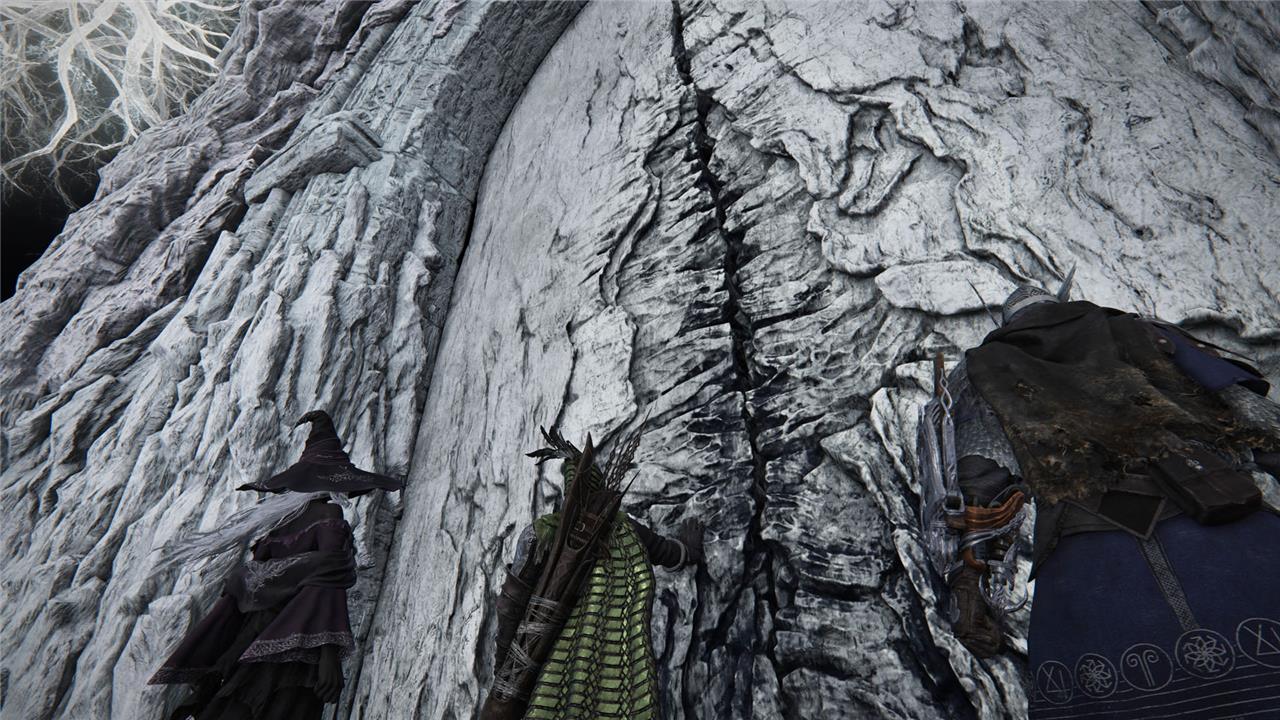
The best Nightlords order in Elden Ring Nightreign is a subjective matter, largely up to your individual class, equipment, and personal adeptness with each character. That said, we’ve assembled guide to present what would be, in our opinion, the fights you should focus on first to build up confidence and accumulate knowledge about the game.
In general, the better-prepared you are for each fight, the better you’ll fare. But some Nightlords are less forgiving than others if you reach the final day under-leveled or under-equipped. Along the same lines, we consider bosses who can inflict detrimental effects more difficult to prepare for than those who you can defeat simply by mastering their mechanics.
And then, of course, there’s the huge matter that all of this – as with all things Nightreign – is contingent on whether or not your teammates actually collaborate with you.
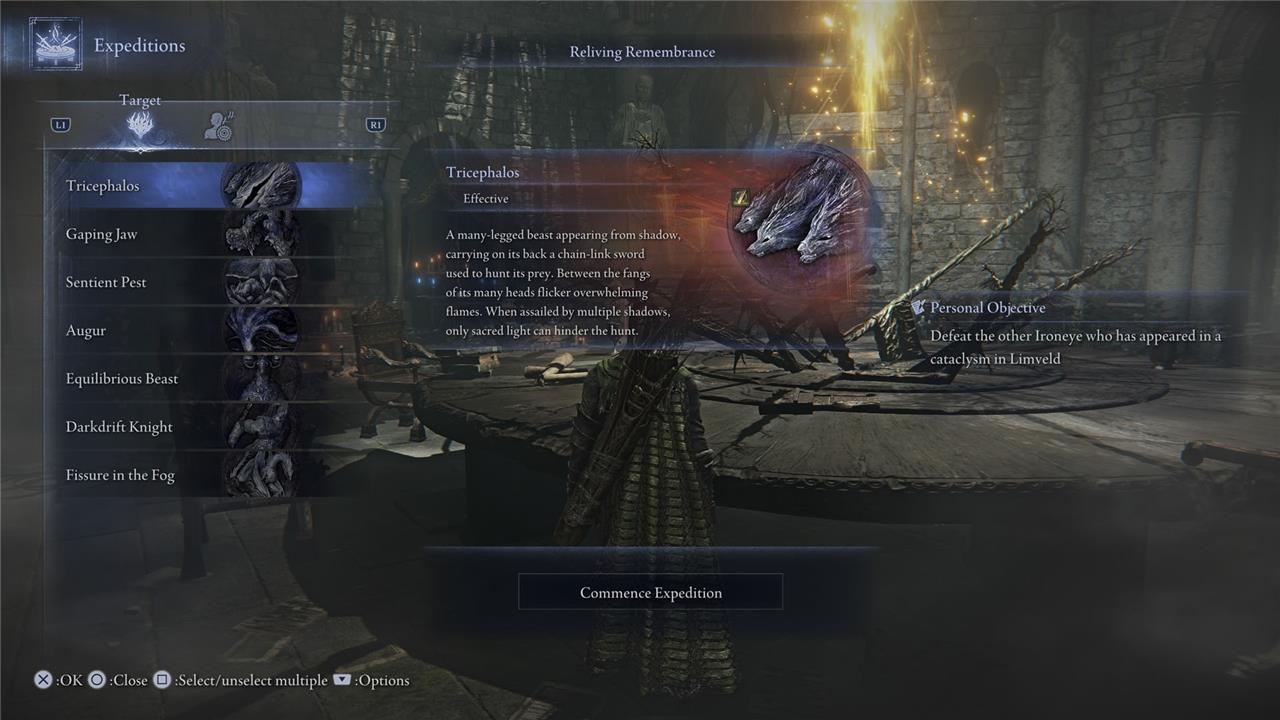
With all this in mind, below, here’s our recommendation for the best Nightlords order in Elden Ring Nightreign, with their respective expedition names in parentheses.
- Gladius, Beast of Night (Tricephalos)
- Gnoster, Wisdom of Night (Sentient Pest)
- Maris, Fathom of Night (Augur)
- Adel, Baron of Night (Gaping Jaw)
- Caligo, Miasma of Night (Fissure in the Fog)
- Libra, Creature of Night (Equilibrious Beast)
- Fulghor, Champion of Nightglow (Darkdrift Knight)
- Heolstor the Nightlord (Night Aspect)
Gladius, Beast of Night (Tricephalos)
Gladius, Beast of Night, is the first major Nightlord boss players face in Elden Ring Nightreign during the Tricephalos Expedition. This three-headed wolf-like creature wields a giant sword whip and breathes fire, making it a formidable opponent with a mix of physical and fire attacks. Gladius can also split into three separate heads, increasing the challenge by attacking from multiple angles. The boss is notably weak to Holy damage, which can stagger him and reduce his attack and defense temporarily, especially during his split phase. Effective strategies include using a Holy weapon, maintaining good shield defense, and having a balanced team with both melee and ranged Nightfarers to handle his slippery and multi-target nature. Gladius serves as a tough but manageable introduction to the Nightlord bosses, setting the tone for the challenges ahead in Nightreign.
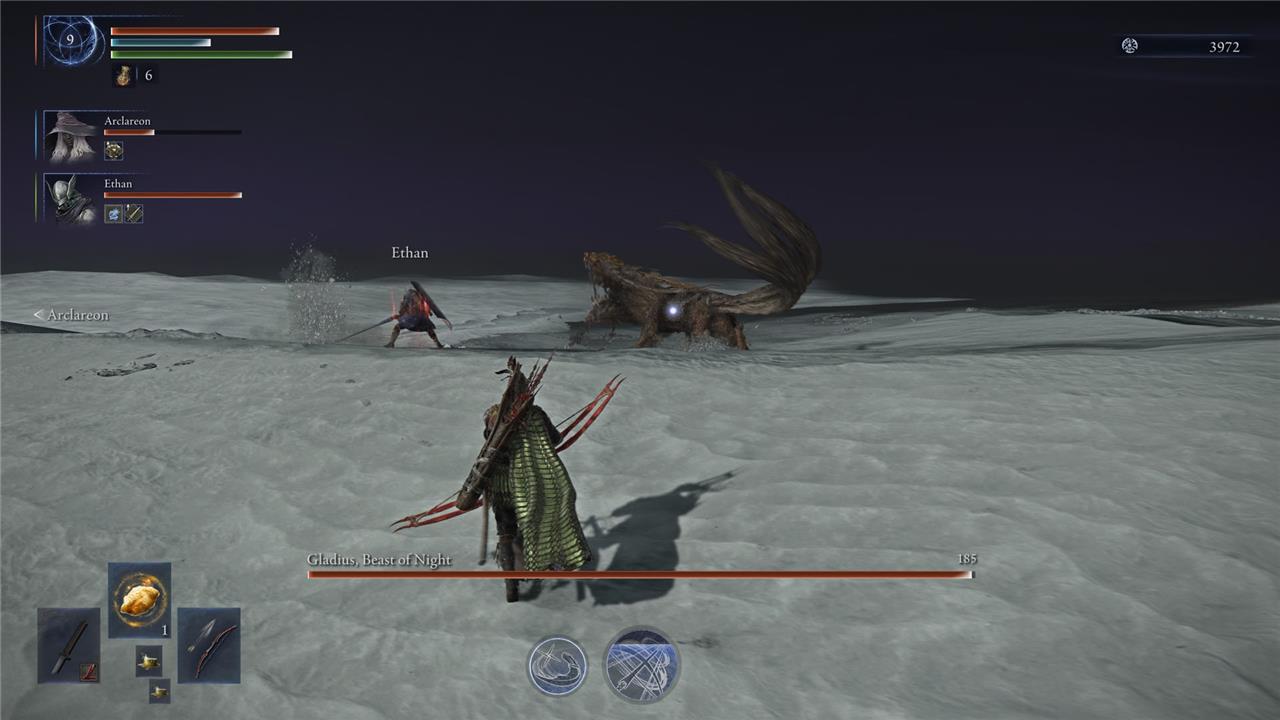
There isn’t much to say here because you can’t actually choose not to face Gladius, Beast of Night first. Tricephalos is the first expedition you have access to and the other expeditions won’t become available until you have defeated them.
Use your first runs against this Nightlord to learn your way through Limveld.
Gnoster, Wisdom of Night (Sentient Pest)
Gnoster, Wisdom of Night (Sentient Pest) stands out as a unique Nightlord boss in Elden Ring: Nightreign, encountered during the Sentient Pest expedition. This challenging fight features two distinct entities: a flying Moth that bombards players with magic projectiles and poison mist from above, and a ground-based Shears (resembling a colossal scorpion or lobster) that uses powerful, telegraphed physical attacks like pincer slams and stomps. Both forms are weak to fire, making fire-based weapons or greases especially effective. The battle demands coordinated team play: ranged allies should focus on the elusive Moth, while tankier characters distract and punish the Shears on the ground. As the fight progresses, the Moth and Shears merge their abilities, unleashing a devastating charge attack with beams of light-requiring quick repositioning to avoid massive damage. Defeating Gnoster not only returns any levels stolen by its invading pests but also rewards players with a significant rune bounty and the “Integration of Intelligence” power, which grants runes on attack impact, accelerating future progression.
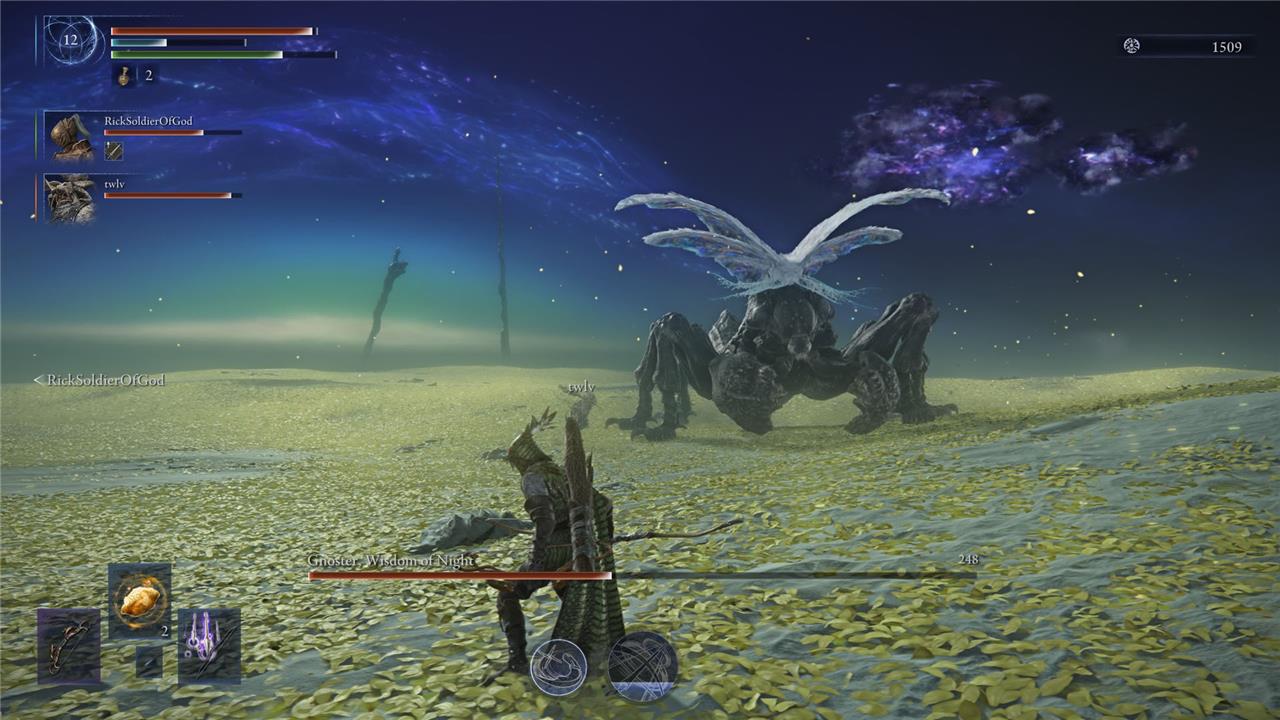
It might sound contradictory to face a duo boss after beating Gladius, Beast of Night. Tracking two enemies is challenging and requires you to know the limits of your class. Even so, you should still pick Sentient Pest as your second expedition and fight Gnoster, Wisdom of Night. There are two main reasons for that.
First, almost none of their attacks are capable of instantly killing you unless you’re under level 10. They don’t require you to have specific resistances or weapons either. If you’re playing a melee class, you just need to have patience until Gnoster gets closer and wait for a good window to attack.
The second reason is Gnoster’s weaknesses. Fire damage is extremely strong against it and it is easy to find a weapon that causes fire damage; throwing pots or Fire Grease, a consumable that makes your weapon cause elemental damage for a period of time.
Maris, Fathom of Night (Augur)
Maris, Fathom of Night, also known as Augur, is a Nightlord boss encountered during the Augur expedition in Elden Ring Nightreign. This aquatic, squid-like entity floats gracefully through the air and uses water and wind-based attacks, including summoning explosive jellyfish and tentacles that lash out at players. Maris is highly vulnerable to Lightning damage, making lightning-based weapons and buffs essential for an effective strategy. Players must be cautious of its Hypnosis attack, which builds up a dangerous Sleep status effect; interrupting this channel by aggressive attacks is crucial. The fight becomes more intense at half health, with Maris summoning more hazards and launching explosive droplets. Staying mobile, targeting summoned creatures, and exploiting its elemental weaknesses are key to overcoming this challenging boss.
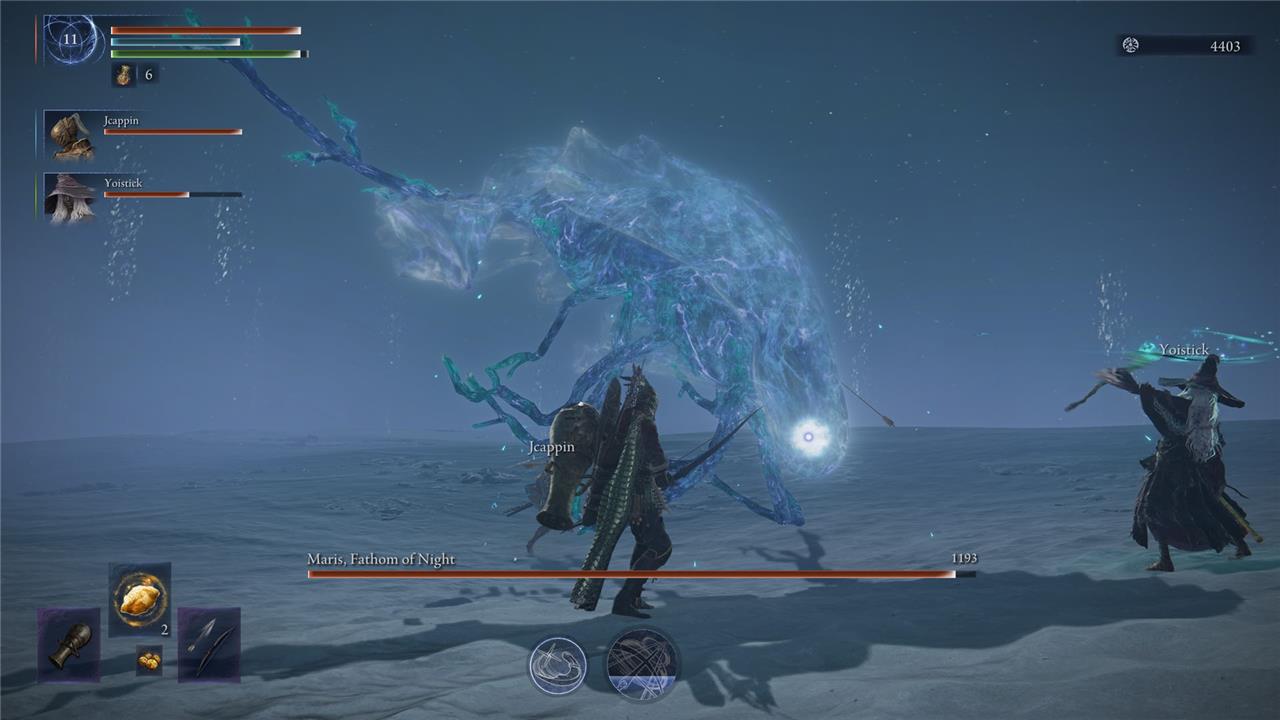
The only reason why we suggest tackling Maris, Fathom of Night (from the Augur expedition) after Gnoster is that this boss constantly applies sleep, dealing a lot of damage and leaving you exposed to follow-up attacks. Nevertheless, after enough matches, you’ll have obtained enough Relics, some of which can come with sleep resistance, removing a challenging factor of this fight.
When it comes to mechanics, there are just a couple of attacks to watch out for. Kill or dodge the small jellyfish the boss sends your way and run from the shining one, since it nukes a large area. Their main attacks are clearly telegraphed so there isn’t much to worry about on that front. Learn their patterns and defeat your third boss.
Adel, Baron of Night (Gaping Jaw)
Adel, Baron of Night-also known as the Gaping Jaw-is the formidable Nightlord boss you face at the climax of the Gaping Jaw expedition in Elden Ring: Nightreign. This monstrous foe is a massive, crooked black dragon with a cavernous snout lined with jagged teeth, designed to devour anything in its path. Adel’s attacks are devastating and relentless, making him one of the toughest challenges in the expansion. His unique weakness is poison: inflicting poison damage is not only effective for chipping away at his large health pool, but also the only way to interrupt some of his most dangerous attacks. Players are advised to seek out poison-inflicting weapons, spells, or consumables during their expedition preparation, as these will be crucial for gaining the upper hand in this climactic battle. Defeating Adel rewards you with Night of the Baron Relics, bringing you one step closer to the expansion’s final showdown.
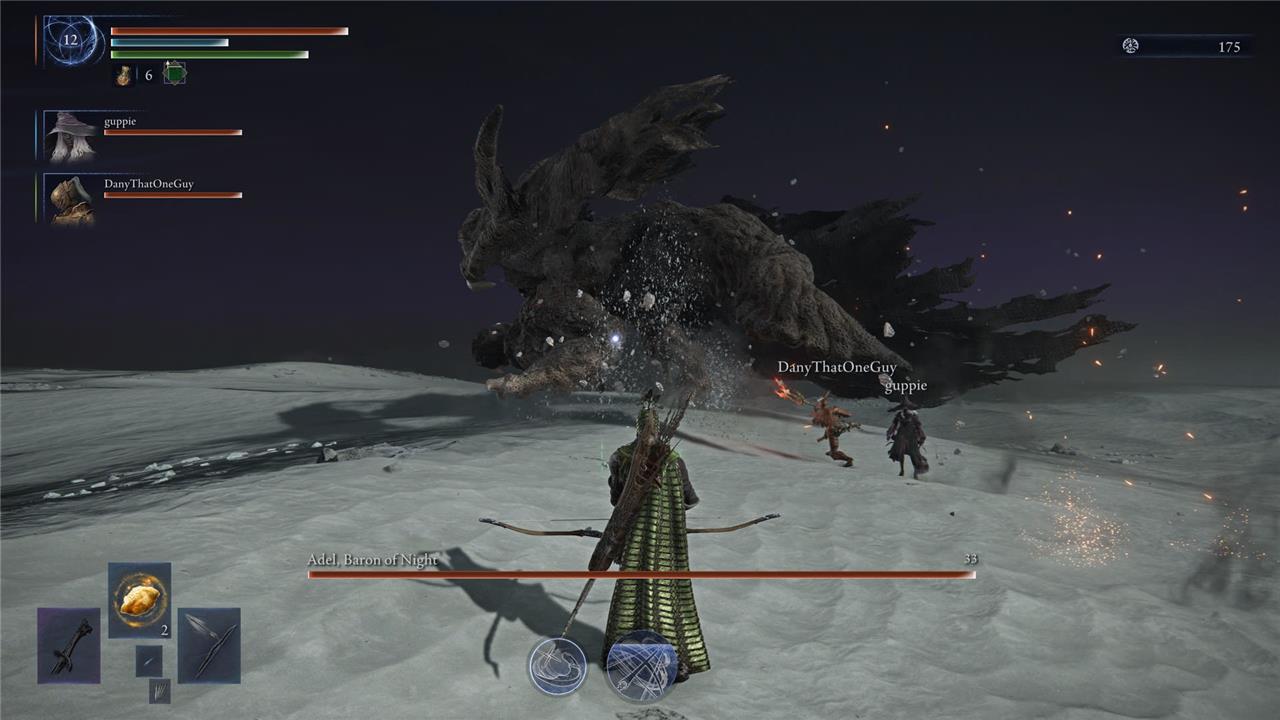
Although the Gaping Jaw is the expedition Nightreign suggests tackling after Gladius, we’d suggest waiting to fight Adel, Baron of Night until you become more familiar with the game. Adel deals a lot of damage with their bite attack, which causes blood loss, a major threat if you don’t have a lot of health.
In general, Adel’s attacks can really pin you down, but when the boss enters its second phase, it becomes a real nightmare. To make your life easier, you can use poison against the boss, but this is a type of elemental damage difficult to find weapons with or greases to apply. In other words, you will probably have to face the boss without relying on exploiting any weakness.
Caligo, Miasma of Night (Fissure in the Fog)
Caligo, Miasma of Night, also known as the Fissure in the Fog Nightlord, is a formidable dragon boss encountered on the third day of the Fissure in the Fog expedition in Elden Ring: Nightreign. Dwelling within dense, frigid mists, Caligo uses frost-based attacks and fog to disorient players, unleashing freezing breath, sweeping claw strikes, and wide-reaching tail whips. The battle is marked by Caligo’s ability to inflict Frostbite and control the arena with ice mines and mist fields, making positioning and timing crucial. As the fight progresses and Caligo’s health drops below half, the dragon becomes even more aggressive, summoning ice vortices and shattering glyphs that rain deadly shards across the battlefield. Players are encouraged to exploit Caligo’s notable weakness to fire, using fire-based weapons or incantations to maximize damage and create windows for counterattacks. Mastery of attack cues and careful movement are key to overcoming this chilling Nightlord and claiming the Night of the Miasma Relics.
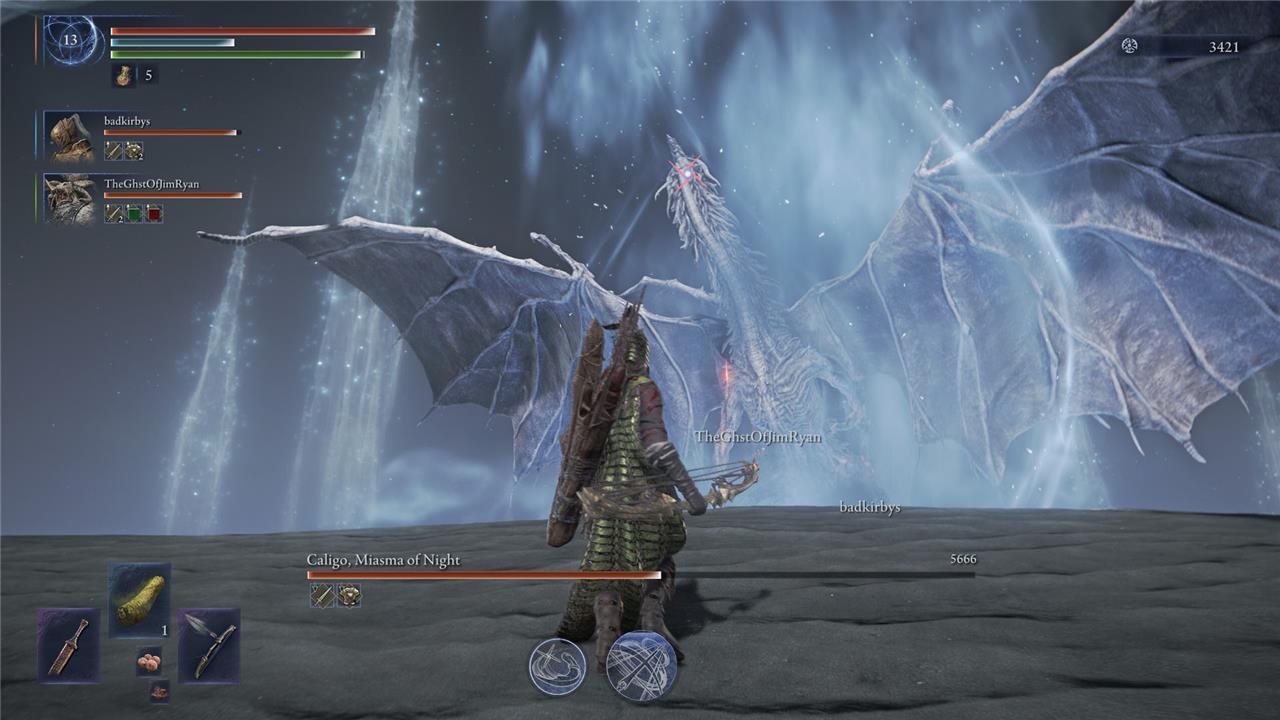
Fighting a giant prehistoric dragon is never a good idea, but Caligo, Miasma of Night, the Nightlord you must fight in the Fissure in the Fog expedition, could be worse. To prepare for this fight, farm runes to reach level 12 or higher.
Once you know how to handle Caligo’s attacks, this gigantic dragon becomes less of a threat, but knowing the fight is not enough to survive. During the match, watch out for elemental resistances that might drop from minor bosses. Caligo’s attacks can inflict Frostbite and they cover large areas of the arena, so you’ll probably get hit by them. You also want to come with strong weapons capable of causing fire damage.
Libra, Creature of Night (Equilibrious Beast)
Libra, Creature of Night-also known as the Equilibrious Beast-is the Nightlord encountered during the Equilibrious Beast expedition in Elden Ring: Nightreign. This imposing, goat-headed entity embodies the concept of balance, both in appearance and combat style. The encounter begins with a unique interaction: a Scale-bearing Merchant offers players a tempting buff in exchange for a debuff, such as increased stamina at the cost of reduced HP and FP, or the option to refuse entirely. Once the deal is made (or declined), the merchant transforms into Libra, initiating a single-phase boss fight. Libra wields a quarterstaff for swift physical attacks and mixes in Golden Order incantations alongside Madness-inducing spells, making the battle a test of both agility and adaptability. Notably, Libra is highly vulnerable to Madness, and if players can inflict this status, the boss becomes frenzied and resorts to basic staff attacks, creating a window for counterattacks. However, Madness-related gear is rare in Nightreign, so exploiting Libra’s additional weaknesses-Fire, Slash, and Holy damage-is often necessary. Libra’s relentless attack patterns, area-denial spells, and the psychological challenge of the merchant’s bargain make this Nightlord one of the more memorable and challenging bosses in the expansion.
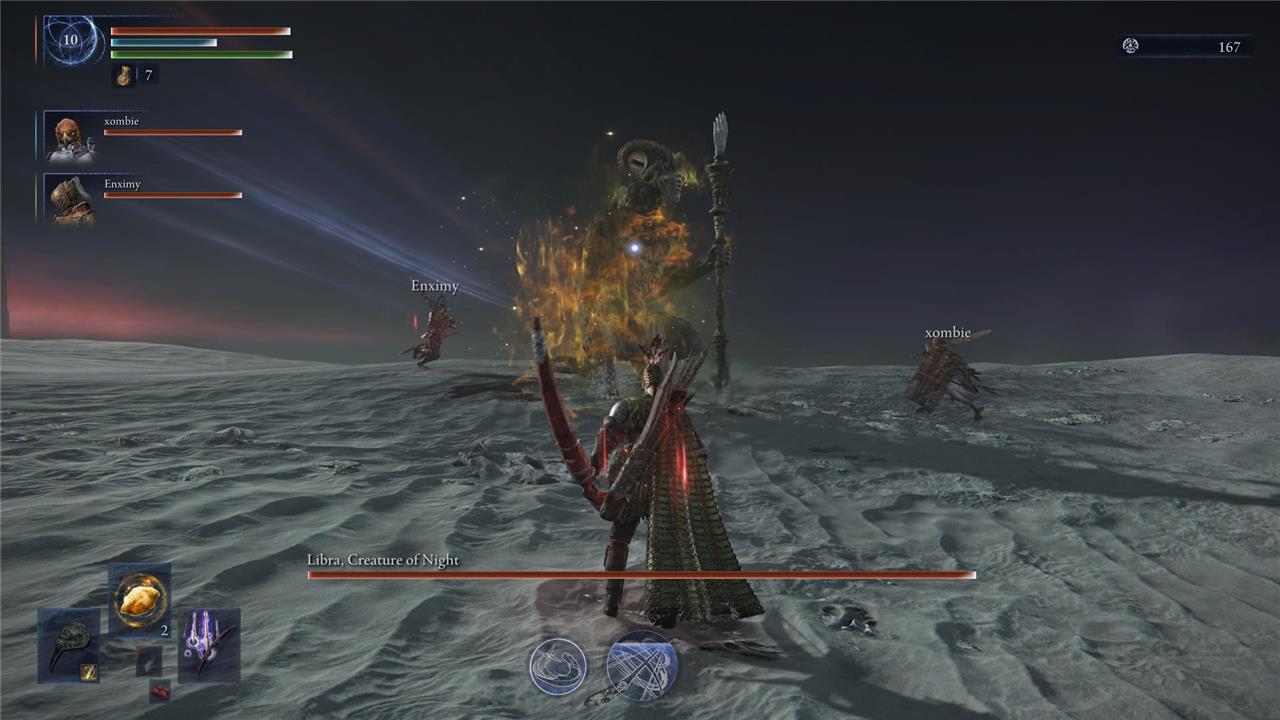
The Equilibrious Beast expedition, where you must fight Libra, Creature of Night, is presents a notable step-up in difficulty compared to the previous fights. The most challenging aspect of this fight is in the preparation: Most of Libra’s attacks inflict madness and there aren’t many methods to prevent it. They are also weak to madness, but you’ll need to find the right incantation to cause that type of damage.
Most importantly, there isn’t a safe spot to hide in this fight. Libra is fast, can teleport next to their target, and unleashes lengthy, quick sequences of attacks with their staff. Finding the right window to heal is difficult, because they can cast long-range area-of-effect attacks that hit many places in the arena. Beating Libra is a matter of farming, learning the fight, and luck.
Fulghor, Champion of Nightglow (Darkdrift Knight)
Fulghor, Champion of Nightglow, also known as the Darkdrift Knight, is a formidable Nightlord boss encountered on Day 3 of the Darkdrift Knight Expedition in Elden Ring Nightreign. This centaur-like warrior wields a massive spear and combines high mobility with both melee and ranged attacks, including summoning golden spears from the ground. Players must stay agile to avoid his powerful strikes, which can bypass shields if too close, making dodging essential. Team compositions benefit from frontline Nighfarers like Guardian and Raider, whose abilities help absorb and retaliate against Fulghor’s attacks. His clear weakness to Lightning damage provides a strategic advantage for players aiming to bring down this radiant yet fierce champion.
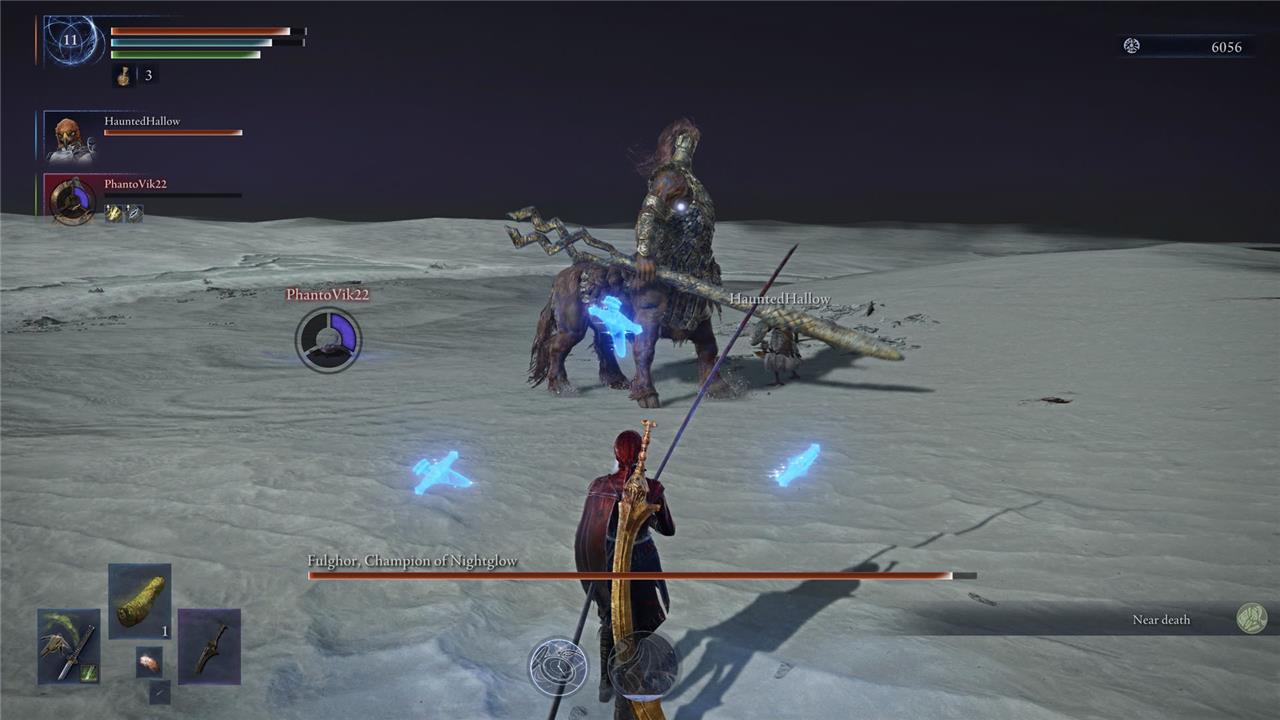
Among the bosses in Elden Ring Nightreign, very few are as punitive as Fulgor, Champion of Nightflow. This one-arm centaur is waiting for you in the Darkdrift Knight expedition and facing them will test all you’ve learned so far. Exploiting Fulghor’s weakness to lightning damage is a must, but the challenge here involves actually hitting them while avoiding their massive area attacks or quick thrusts.
You need to know how to farm well for this fight and memorize Fulghor’s attack pattern if you plan on completing this expedition. Fulghor causes a lot of damage, making you run out of flasks pretty fast if you don’t dodge at the right time. In addition, during the second phase, Fulghor becomes more brutal with a complex combination of short and long-distance attacks.
Heolstor the Nightlord (Night Aspect)
Heolstor the Nightlord, also known as the Night Aspect, is the formidable Nightlord boss encountered during the Night Aspect expedition in Elden Ring: Nightreign. Players first face the spectral Shape of Night, a swift and aggressive knight that relies on teleportation and rapid melee attacks to keep challengers off balance. After depleting its health, the true form of Heolstor is revealed-an armored figure wielding an imbued greatsword, whose tactics become even more relentless. In this phase, Heolstor employs devastating arena-wide spells, swift dashes, and powerful flame-infused sword attacks, forcing players to constantly reposition and react to unpredictable patterns. With immunity to poison, frost, and bleed, and a notable weakness to Holy damage, Heolstor’s fight demands both patience and adaptability, making it one of the most memorable and challenging encounters in the Nightreign expansion.
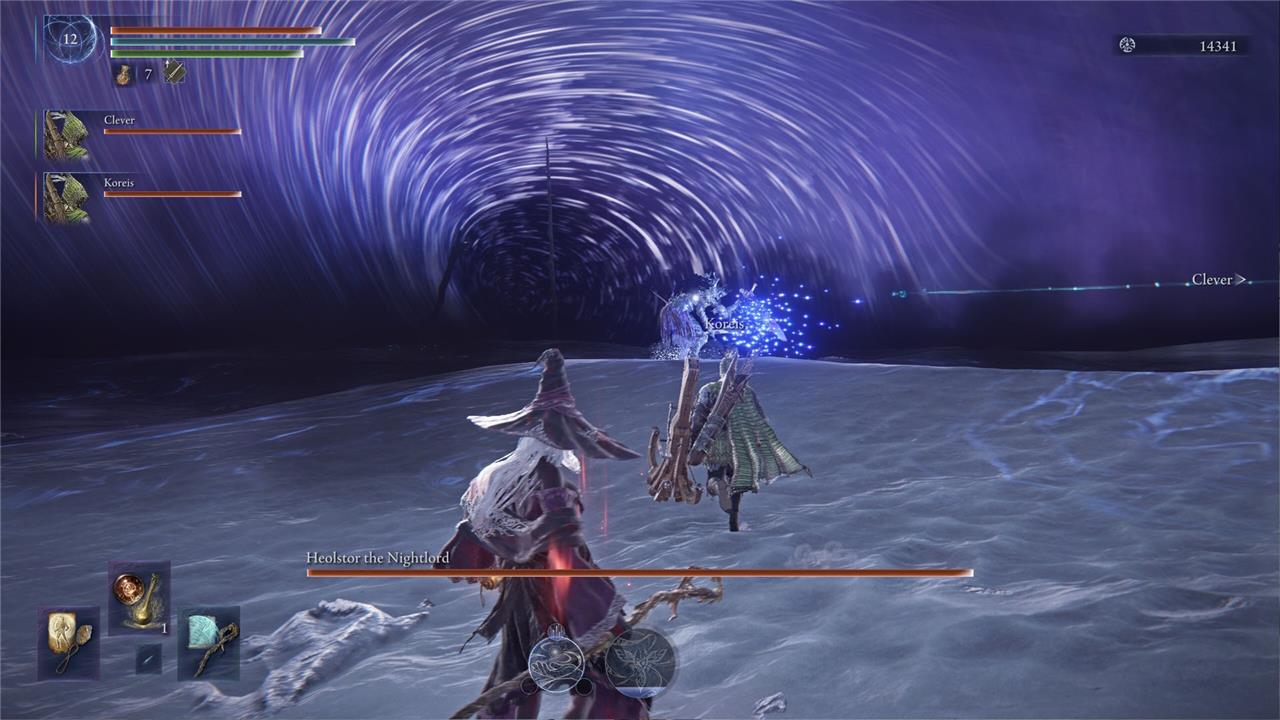
Just like Gladius had to go first, you can’t avoid saving the Night Aspect expedition for last since it is the last one you unlock and where you must fight Heolstor the Nightlord. Be sure to have sourced the best gear and achieved the highest level you can before facing this one.
What is the optimal sequence to conquer the Nightlords in Elden Ring Nightreign
Optimal Nightlord Boss Order in Elden Ring Nightreign
Recommended Sequence
The optimal order to conquer the Nightlords in Elden Ring Nightreign balances difficulty, boss mechanics, and the likelihood of acquiring the right gear and resistances as you progress. While some flexibility exists based on your build and party composition, the following sequence is widely recommended for the smoothest progression:
-
Gladius, Beast of Night (Tricephalos Expedition)
-
This is the mandatory first boss for all players. Defeating Gladius unlocks access to the other Nightlords.
-
-
Sentient Pest (Gnoster, Wisdom of Night)
-
A duo fight that is manageable early on, especially since their attacks are less likely to one-shot you if you’re above level 10. Fire damage is effective here, and the fight helps you practice positioning and patience.
-
-
Maris, Fathom of Night (Augur Expedition)
-
This boss inflicts sleep but is predictable once you learn its patterns. By this stage, you should have enough relics or sleep resistance to mitigate its main threat.
-
-
Adel, Baron of Night (Gaping Expedition)
-
Adel’s blood loss and high-damage attacks make this boss tougher, but poison is an effective counter if you’ve found the right weapons or items.
-
-
The Gaping Jaw
-
Considered one of the easier Nightlords, making it a good candidate for an early or mid-run fight, depending on your party’s strengths.
-
-
Equilibrious Beast (Libra, Creature of Night)
-
This boss is significantly harder and requires you to deal with floating Sigils during its second phase. Madness weapons are particularly effective, and having at least one ranged character is crucial.
-
-
Darkdrift Knight or Fissure in the Fog
-
These are among the most challenging Nightlords, with complex mechanics and punishing attacks. Save them for later when your party is well-equipped and experienced.
-
-
Heolstor, The Nightlord (Final Boss)
-
Unlocked after defeating at least four other Nightlords. Heolstor is one of the hardest bosses in the game, with a wide range of attacks and the ability to teleport. Holy damage is particularly effective.
-
Key Tips
-
Always exploit each boss’s elemental weakness (e.g., Holy for Gladius, Poison for Adel, Fire for Sentient Pest, Lightning for Maris).
-
Bring ranged characters for bosses with aerial or Sigil mechanics (notably Maris and Equilibrious Beast).
-
Adapt your order based on your party’s strengths, available gear, and the resistances you’ve acquired during your run.
This order provides a balance of manageable early fights, opportunities to gather useful gear, and a logical progression toward the most challenging encounters in Nightreign.
Which Nightlord is best to fight first for a balanced challenge
For a balanced challenge after the mandatory first boss, Gladius, Beast of Night (Tricephalos), the best Nightlord to fight next is Adel, Baron of Night from the Gaping Jaw expedition. Adel offers a fair test of mechanics and difficulty-he’s considered easier than the hardest Nightlords but still requires you to adapt and learn, especially if you can acquire poison armaments, which are effective against him.
Alternatively, Caligo, Miasma of Night (Fissure in the Fog) is also a solid choice for a balanced challenge. If you use the Fire-damaging relic from Gladius, Caligo becomes more manageable, making this fight a good early option that isn’t overwhelmingly difficult but still rewarding to overcome.
Both Adel and Caligo are recommended for players seeking a middle ground between ease and challenge, letting you build confidence and gather resources before tackling the more demanding Nightlords later in your run.
